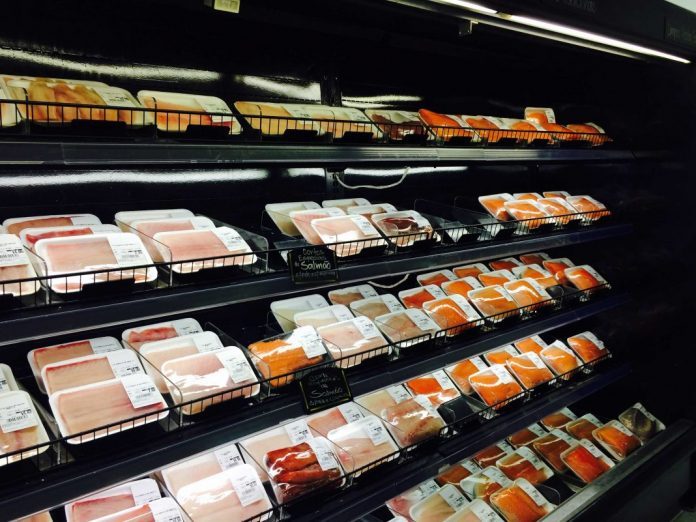Norway’s Consumer Council is advocating for a salmon disease labeling scheme, but the industry isn’t so sure.
Norway’s Consumer Council is pushing for the labelling of salmon, with information about their history of illness.
As it currently stands, fish that have experienced illness and disease such as gill disorders, parasites and heart disease, are harvested and sold in shops.
In a recent interview with Norwegian broadcaster NRK, Consumer Council exec Inger Lise Blyverket expressed the need for such labelling.
“Both Norwegian salmon farmers and other food producers must realize that Norwegian consumers want to know more about the production conditions and about animal welfare,” said Blyverket.
However, this proposal faces resistance from the seafood industry.
Sjømat Norge, the Norwegian Seafood Association, disagrees with the idea, emphasising that diseases in fish do not pose a risk to human health.
“Everything we surround ourselves with contains a lot of bacteria and viruses, it’s everywhere, so it has nothing to do with whether the food is safe or not,” Seafood Norway Director Jon Arne Grøttum told NRK.
Any such labelling scheme would be challenging to implement, according to Grøttum who questioned why such labelling should apply only to salmon and not other protein production.
“Firstly, this is not about food safety. Secondly, it is very difficult to implement. Then you have to sort of do a pathological examination of each individual fish, even if you know the cause. And thirdly, it is a bit strange that this type of labelling scheme should be introduced for salmon and not for other meat production,” said Grøttum.
The Sjømat Norge went on to argue that distinguishing between healthy and sick fish is not straightforward, as a sick fish may not necessarily be unwell, and carriers of viruses may not exhibit symptoms.
“I think this is an irrational proposal,” he said. “It has no bearing on food safety. If labelling of sick animals had been relevant or appropriate for food safety or quality, then the authorities would have made sure to have it in place.”









